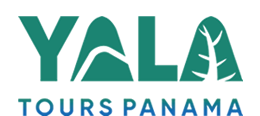Rainforest, wildlife and Canal
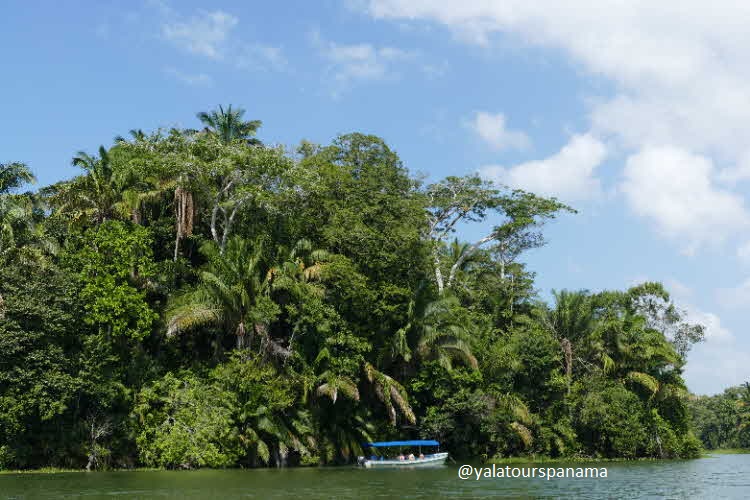
Starting in Gamboa we explore by boat Gatun Lake for wildlife. Half of the Canal’s waterway is a big artificial lake serving as well as a water reservoir to feed the locks at the Pacific and Atlantic side. At the shore of the many forested islands and bays we have the opportunity to observe some mammals such as Mantled Howler Monkey, White-faced Capuchin monkey, Two- and Three-toed Sloth, birds such as Osprey and Snail Kite, and reptiles like Green Iguana, Jesus Christ Lizard, River Turtle, Spectacled Caiman and American Crocodile. Bypassing ships are a contrasting addition to this excursion. Observe the expansion works of the Canal, widening and straightening the waterway along the former Chagres River. Picnic lunch on an island in the Canal.
Take a look for details at our Popular Tours and Book.
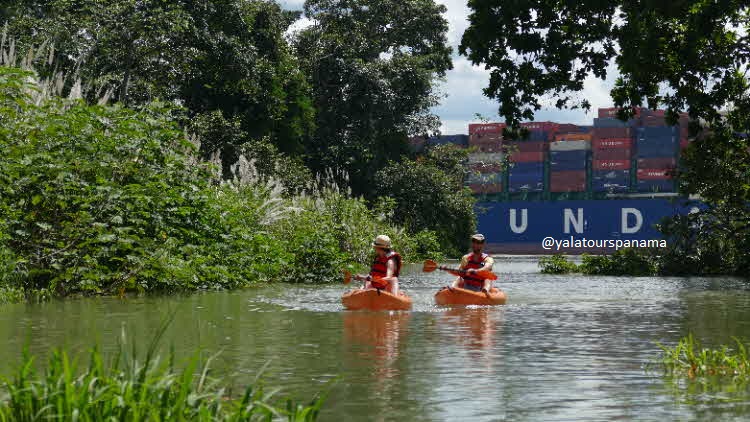
Get close to nature and explore by kayaking the shores of islands and bays adjacent to the Canal. Smoothly you glide next to the dense rainforest vegetation admiring some flowering vines and listening to the sounds the rainforest. You might discover a variety of birds, monkeys and other animals. All of a sudden you see around a corner of an island a big ship passing by and disappearing behind the trees.
Take a look for details at our Popular Tours and Book.
Our experienced fishing guide takes you further out on the lake than the Canal boat tour to the best fishing spots. The main fish is the Peacock Bass an exciting and challenging fighter. Since it is an introduced species, we don’t impact the native fish fauna. Another often caught and also introduced fish is the Oscar. There is also some big native fish but more difficult to catch such as Tarpon (will be released) and Snook.
Look out for wildlife along the rainforest shores and be impressed by the big ships you will encounter on the way.
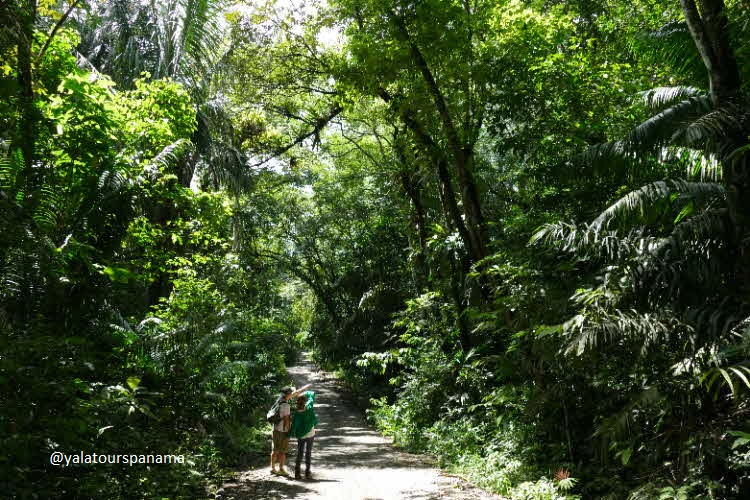
This national park is only half an hour away from the City and forms together with the Parque Metropolitano and Camino de Cruces National Park a forest-corridor in the former Canal Zone between the Pacific and Gatun Lake. Several trails and gravel roads are excellent for nature observation, birding, walking and hiking. Here some examples:
The Pipeline Road is world famous for bird observation and offers excellent opportunities to see rainforest mammals. It is an easy walk on a gravel forest road. We usually walk slowly to observe wildlife, going around 2-4 km in and back.
On the historic Camino de Cruces you can hike a bit more than 10 km on a small sometimes rugged trail for 6-7 hours through the rainforest. At many places you still can see parts of the road with cobblestones of the colonial times. This was the main connection of the Americas to get from the Atlantic to the Pacific side, going the Chagres upriver and continuing on the Camino de Cruces to the Pacific. Coming from the Pacific side on our hike through the rainforest you will see at the end of the Camino the Cruces trail the ruins of the colonial town Venta de Cruces. Here we cross the Chagres River by boat or if wished by kayak.
Our adventure tour in the rainforest takes you on small hardly used trails to remote places. In a forest stream you can cool off. Option: overnight in tents (dry season).
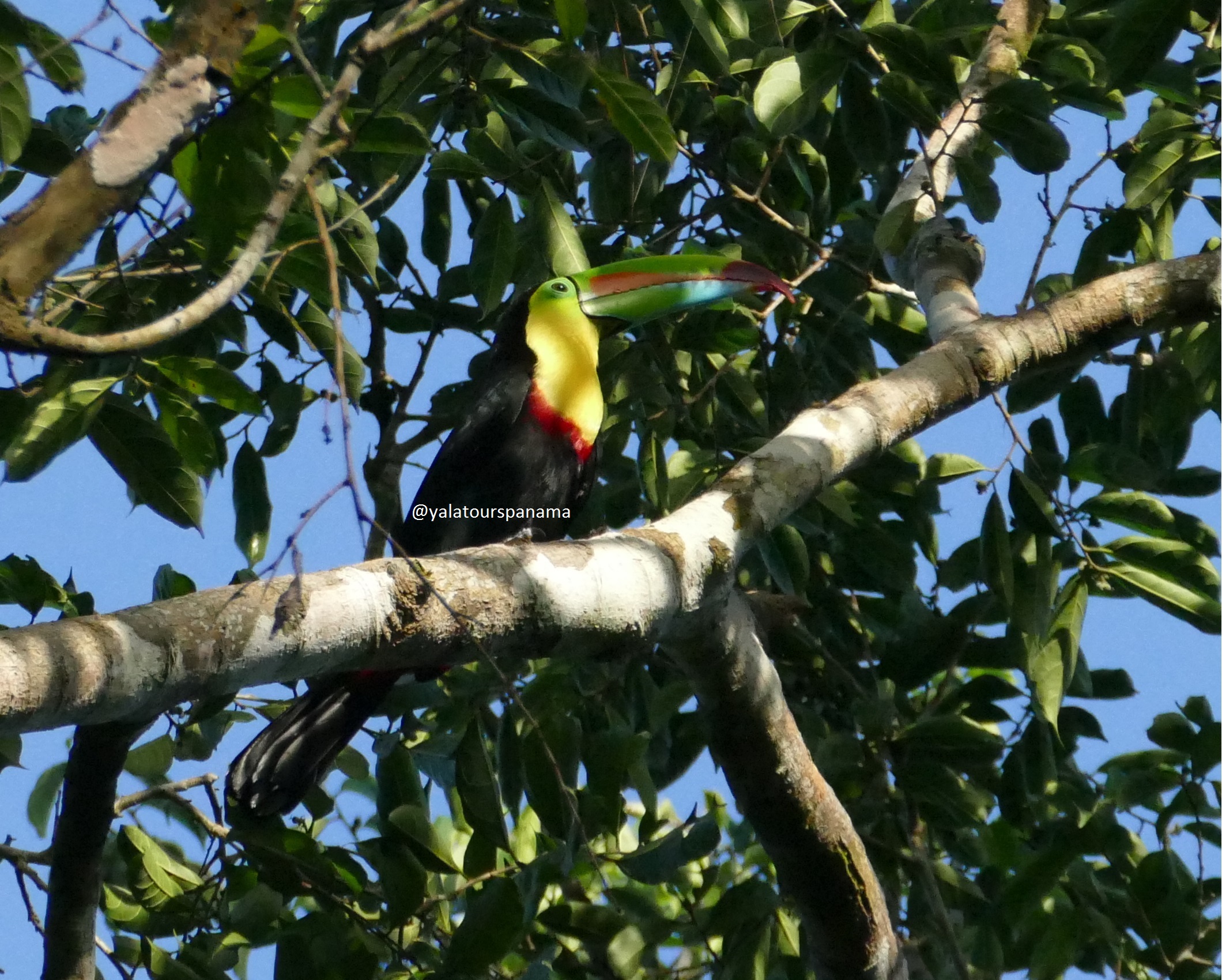
With our birding tours in the canal region you see a high variety of bird species in a small area: from the drier Pacific side to the evergreen Caribbean side, from the lowlands to the foothills, in the Western region more Central American species and in Eastern region some species from South America. Around Gamboa are many very good birding spots in addition to Pipeline Road. Just in the area of Gamboa over 450 bird species have been registered of the over 1000 species found in Panama. We offer half day to five day tours in the canal region (Pacific, Gamboa, Caribbean, Eastern and Western foothills) with a specialized birding guide.
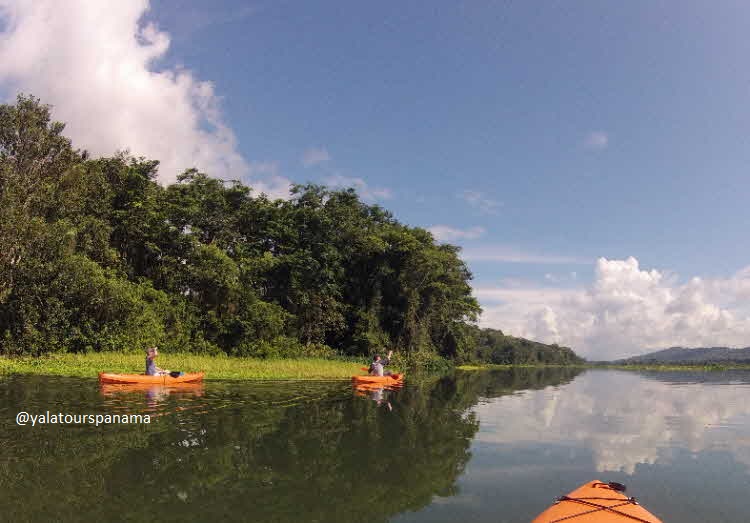
The Chagres River flows with hardly any current through the Soberanía National Park reaching at Gamboa the Canal where it has been transformed to the artificial Gatun Lake of the Canal. It is the main provider of water for the Canal and the only river in the world that flows into two oceans. On our single or double kayaks you explore this upper part of Gatun Lake and the transition zone of lake and river. Look for wildlife along the rainforest shores, observe water fowl and enjoy the beautiful scenery of the tranquil waters with its patches of floating vegetation. You can also explore the rainforest ashore by walking on a little side trip.
Take a look at our Popular Tours and Book!
The Embera village in Gamboa lies on the banks of the Chagres River in a distance of 5 minutes boat ride or 40 min. walk through the rainforest. The Emberas live in palm leave thatched houses on stilts. You can choose to have just a short visit the village or interact with its people to learn about their culture, their traditional and daily life, production of handicrafts and have a presentation of Embera dances.
On the way from Panama City to Gamboa you drive parallel to the Canal and will see Canal sights such as Miraflores and Pedro Miguel Locks, French Cemetery, Centennial Bridge over Culebra Cut of the Canal, and Canal Dredging Division at the former Canal worker town Gamboa. Combine it with the Canal sights close to Panama City: View from Ancon Hill, Administration Building, Causeway, Bridge of the Americas over the Canal. (4- 7 hours)
On the way back to Panama City we can stop to observe the ships entering the Pedro Miguel Locks or visit the Miraflores Locks where you can observe on a platform the passage of the ships. In the Interpretation Center you learn how the Canal was constructed, how it functions and how it is being expanded.
On the 1500 hectares (3800 acres) research island Barro Colorado in the Lake Gatun of the Canal you find the best researched tropical forest and of the best protected rainforest of the region. On a 40 min. boat ride from Gamboa you reach the research station. A naturalist guide (English or Spanish) from the Smithsonian takes you on a walk to explain the functioning of this ecosystem and how scientists from all over the world unravel the ecological connections in the rainforest. Usually several rainforest mammals and sometimes birds such as great Tinamou and Crested Guan can be seen. A visitors center informs you about research projects and achievements of the Smithsonian Tropical Research Institute. (Full day tour, including pick up from your hotel in Panama City, if wished.)
Panama City and Canal
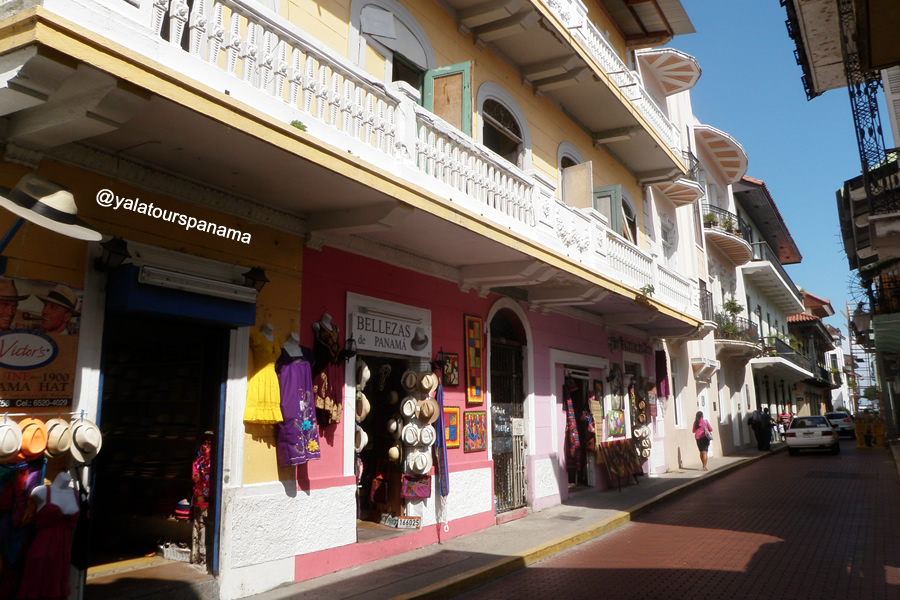
Panama City has a lot to offer: historic quarters, modern cosmopolitan city, nature and recreation areas such as the Causeway at the entrance of the Canal and the Miraflores Locks. Combine your individual program for a half or full day according to your wishes and interests with the following sites of the City:
Example of half day tour (4 hours)
Casco Antiguo (UNESCO-World Heritage Site): Old Quarter
The first founded city (Panama La Vieja) was abandoned after the attack Henry Morgan’s and rebuilt in 1673 on a better defensible peninsula in 8 km distance (Casco Antiguo). You stroll in the old quarters – a mixture of Havana and New Orleans. Most buildings are from the 19th century and some have Spanish colonial architecture. At the Plaza de Francia you enjoy the beautiful view to the Pacific.
Miraflores Locks of the Canal and Visitors Center
Quite close to the City are the Miraflores Locks. You can observe on a platform the passage of the ships through the locks. In the Interpretation Center you learn how the Canal was constructed, how it functions and how it is being expanded.
Causeway at Canal Entrance
The Causeway was built with excavation material of the Canal and connects the mainland with four little islands in front of the coast. A promenade for walking, jogging and biking along the Canal and many restaurants make this a favorite recreational area. In a distance you see at the coast the high rise buildings of the City and on the horizon of the sea, ships waiting to enter the Canal.
Extension options full day tour (8 hours)
Panamá La Vieja (UNESCO-World Heritage Site): Park with Ruins of the first city
Visit the ruins of the first European City at the Pacific coast of the Americas, founded in 1519 by the Spaniards and abandoned in 1671 after the conquest and pillage by the pirate Henry Morgan. You can see the original layout of the city walking on its streets, through former convents, climb on the tower of the cathedral and visit a museum.
Ancon Hill
At 200 m height Ancon Hill offers you a great view to the old and modern city as well as the canal area. A half an hour walk leads you up on a small road through forest where you still can see agoutis and toucans early in the morning or late in the afternoon.
Parque Metropolitano Nature Reserve
This forest of the former Canal Zone reaches right into the city and is part of a forest corridor between the Pacific and the Caribbean. The walk leads up to a hill with a nice view to the contrasting city and its surroundings. With some luck you still can observe sloths or tamarin monkeys in this natural forest. Among the 227 bird species you might see the Chestnut-mandible Toucan or Lance-tailed Manakin. Best for birding and wildlife observation is early in the morning.
Biomuseum
Panama – Bridge of Life: The fascinating story of Panama’s unique location tells you how the isthmus raised out of the sea, connecting South and North America and dividing Atlantic and Pacific Ocean, and how this impacted climate and life in the Americas and other parts of the earth.
The museum has a spectacular location on the Causeway, a recreational area between nature and city, with a contrasting view across the Canal to the last (seasonal) rainforest at the Pacific shore of the region and to the other side across the bay of Panama to the old city with skyscraper lined and heaped up in distance behind. The famous architect Frank Gehry designed an outstanding and colorful construction, reflecting an outstanding natural history and biodiversity of a small country with global importance.
Cinta Costera
You can walk along the bay between the old and modern city. This pedestrian and recreational area is a favorite stroll for locals in the late afternoon and offers a closer look to the high-rise buildings.
Or you can go by bicycle on the Cinta Costera all the way to the Causeway at the Canal entrance.
Lunch
Enjoy your lunch on the islands of the Causeway, in the old city or in some specialties restaurant.
Shopping
We can include a stop at any other place, if you want to purchase something.
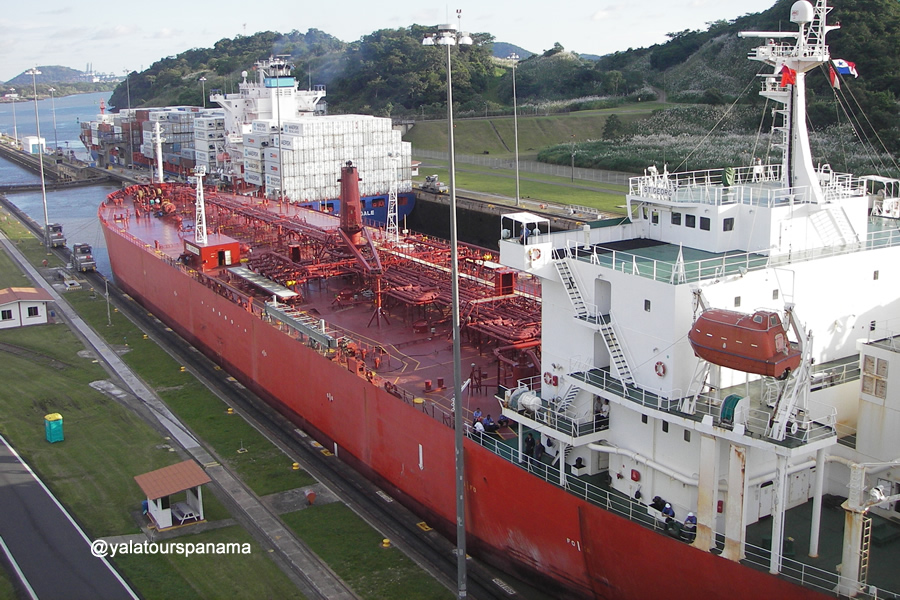
Half or full day tour to Canal sights
Learn about the Canal driving along from the Pacific entrance to Culebra Cut visiting all or some its emblematic places on the Pacific side:
- Pacific Canal entrance (Causeway)
- Bridge of the Americas
- Administration building
- Ancon Hill
- Miraflores Locks Visitors Center
- French Cemetery
- Pedro Miguel Locks
- Centennial Bridge over Culebra Cut of the Canal
This tour is like a half Canal transit where you visit its sights by land.
If wished, you can have an overview of the Canal sights from Ancon Hill Lookout where you can see the places to visit from a distance.
The tour can be extended to a full day tour spending more time at interesting places or including a Canal Boat tour on Gatun Lake of the Canal where you can see the dredging division and how expansion works straightened and widened the Canal. Ships can be seen passing close by and you might encounter one of the huge neopanamax ships in the Canal. In addition you can observe animals at the rainforest shores and islands of the lake. Take a look at our Most Popular Tours
Another option is to do our Ocean to Ocean Canal tour and visit as well the Caribbean side of the Canal. Here you will see at the visitors center the new Agua Clara Locks of the expanded Canal, drive on the new huge Atlantic Bridge over the Canal entrance, see Gatun Locks from a distance and more.
Ocean to Ocean
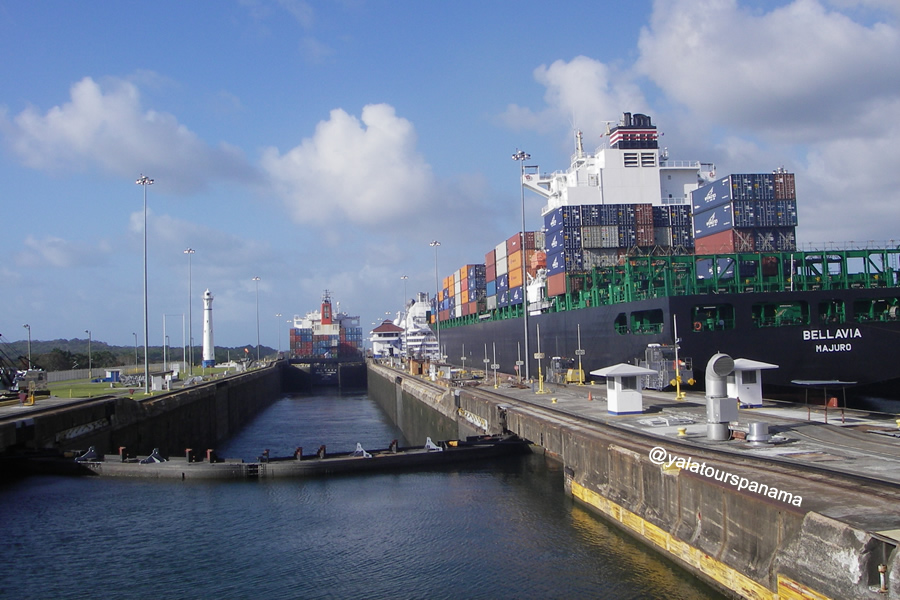
A unique experience is to transit the Panama Canal and pass through the locks on board of an excursion ship. In three chambers of the Miraflores and Pedro Miguel locks you will be risen from the Pacific to the level of the Canal, 26 m above sea level. Here begins the Corte Culebra. Digging this 14 km long ditch was the biggest effort of the Canal construction. In Gamboa you enter Gatun Lake of the Canal, created by damming the lower Chagres River in order to make it navigable for the ships and to have a water reservoir for the chambers of the locks. The half transit finishes in Gamboa or will be done the other way round.
The full transit continues on Gatun Lake passing rainforest islands and peninsulas at a distance. The lake becomes wider and in the late afternoon the ship navigates through the three steps of the chambers of the Gatun lock, getting back down to ocean level. The ship continues towards the Caribbean port of Colon, where buses bring you back to Panama City.
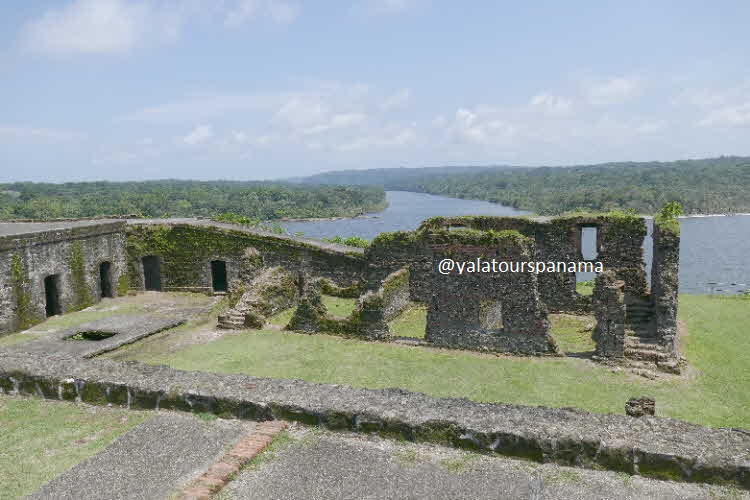
Agua Clara Locks
At the visitors center of the new locks you see how the ships are being risen (or lowered) from the Caribbean to the Gatun Lake of the Canal (or vice versa). About 8 ships per day pass through the new locks of the Canal. You might see a enormous container or gas ship. Using huge water saving basins, 60% of the water can be reused in the chambers of the new locks.
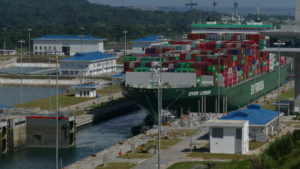
New Locks Agua Clara Yala Tours Panama
San Lorenzo
On the other side of the Canal you drive through the rainforest of the San Lorenzo National Park to the mouth of the Chagres River. Here, surrounded by pure nature, the old Spanish Fort San Lorenzo overlooks the Caribbean Sea, protecting the access up the Chagres River towards the Pacific side.
If wished, we take you on a rainforest walk, looking out for wildlife and discovering the different flora of the more humid Caribbean side.
The San Lorenzo National Park is one of the best places for bird watching. Our special birding tour takes you to the famous Achiote Road.
Note: The old Gatun Locks are not open to general public by now. Instead you have the option to visit the new locks (Agua Clara).
(Fort San Lorenzo is in an almost 2 hour driving distance from Panama City.)
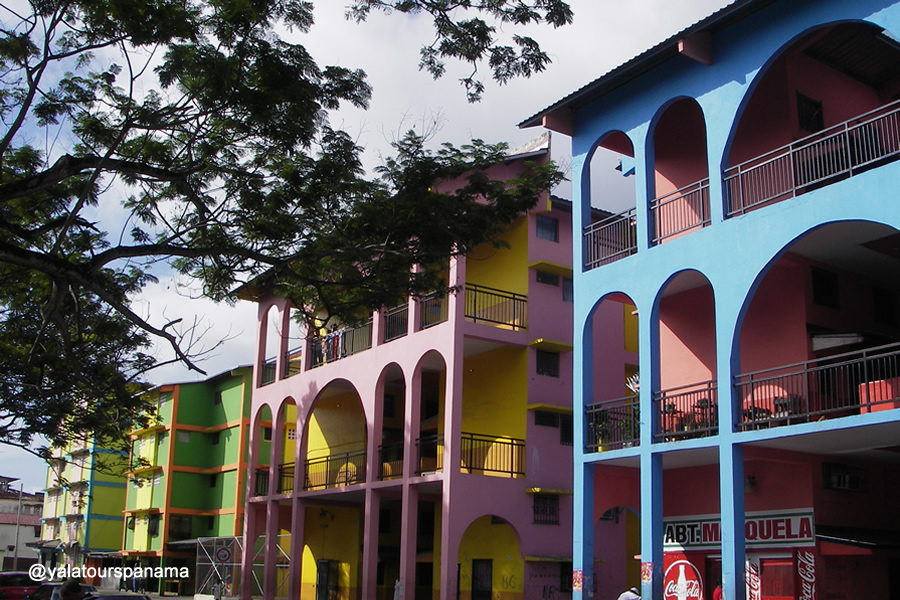
A drive through the beautiful, like a chessboard designed city on a small peninsula gives you an idea of its historic importance, former glamour and its negligence in the last decades. Colon has been founded in 1850 in order to construct the first transcontinental railway during the Californian gold rush. Later its English speaking population, originated from the Antilles, was a great support for the construction of the Canal, its operation and for the presence of US military bases.
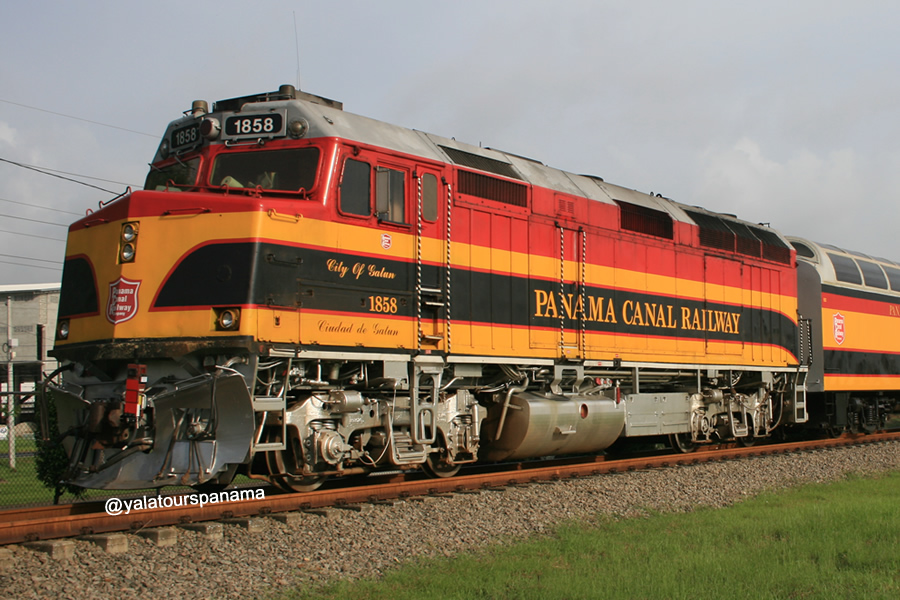
The scenic railway ride between Panama City and Colon passes through rainforest, on a dam over Gatun Lake and in some parts along the Canal. Its predecessor built in 1850-55 was the first interoceanic railway in the world, facilitating the easiest access from the East Coast of the US to California during the gold rush. After a short tour in the beautiful designed Colon, the tour continues by motor vehicle towards San Lorenzo or Portobelo.
(The passenger train is not in operation since Covid-outbreak.)
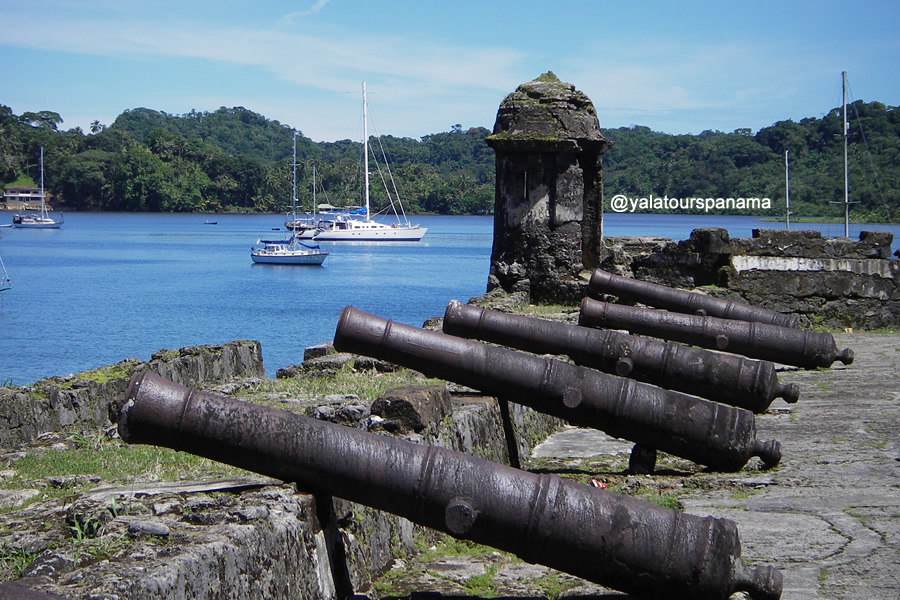
The drive takes you partially along the green Caribbean coast before you reach the beautiful, wind protected bay of Portobelo, named by Christopher Columbus on his fourth voyage in 1502. Colonial fortresses of the 17th and 18th century are witnesses of the outstanding importance of this hub between South America and Europe. From here most of the treasures from the Americas were shipped to Spain. The fairs of Portobelo attracted the most famous pirates of the Caribbean in hunt of gold and silver.
On our tour you will have great views from different forts strategically positioned around the bay, protecting the access of the Custom House where the treasures were stored (now a small museum). A short stroll through the town of Portobelo takes you to the church, famous for its statue of the Black Christ being carried in the biggest pilgrimage of the country on October 21.
If wished, we combine the tour with a visit to one of the small beaches in the area with some walking.
(Portobelo is in an almost 2 hour driving distance from Panama City.)
At the bay of Portobelo it is possible to dive at a reef and around Drake Island where it is thought the remains of Sir Francis Drake lie somewhere on the ground. Marine life abundance and visibility are quite moderate, but it is an easy option we can offer to dive in the Caribbean.
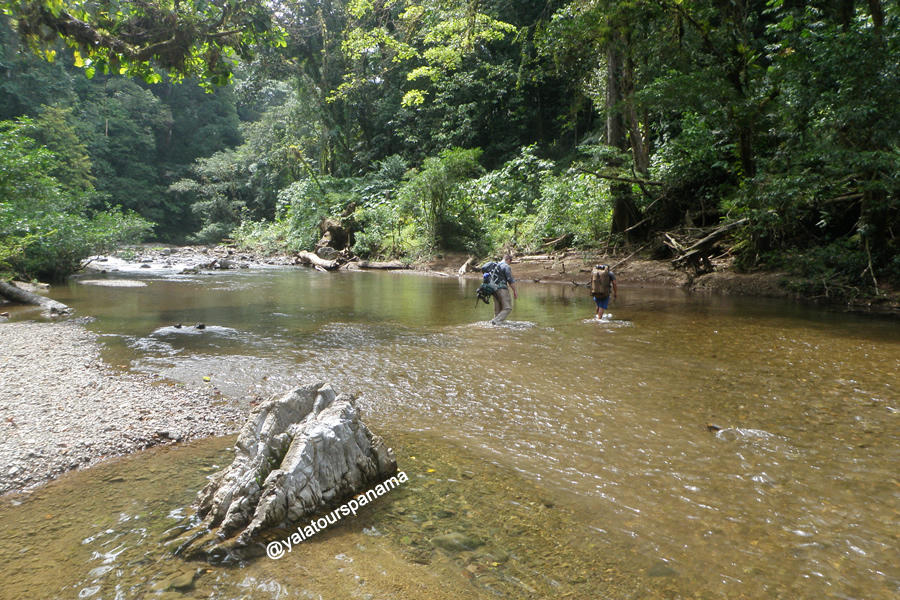
This great rainforest adventure crosses the Chagres National Park on the historic colonial route of the Spaniards between Pacific an Atlantic. Over half of the wealth brought from the Americas to Spain was carried on this trail. Later the English built here a railroad to transport manganese from their mines to the Caribbean. Rails, abandoned over hundred years ago, can be seen still in place in the middle of the rainforest. Crossing rivers and walking in streams are one of the best ways to experience the beauty of the rainforest.
We camp in tents two nights along a river on our three day trek. The trail is in some parts slippery, especially the stones in the water. You need to have a very good condition to hike for about 6 hours a day and often in difficult terrain.
On the drive back you can visit the colonial forts of Portobelo (world heritage) or a Caribbean beach in the afternoon of the third day.
Options:
Combination with other tours on the Caribbean side or trekking tours.
Indigenous Guna and Embera People: Caribbean and Rainforest
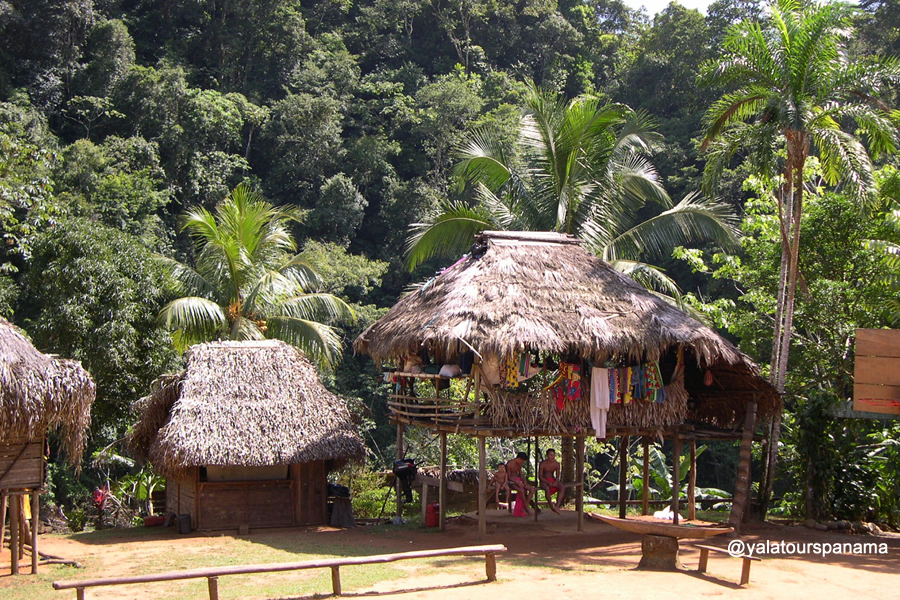
Chagres National Park
In a dugout canoe you go upriver to visit an indigenous Embera village in the extensive Chagres National Park. You will learn about their culture, their traditional way of life and their well-organized life with day tourism. The national park protects the upper Chagres River watershed and provides a big part of the water for the Canal and the drinking water for Panama City. An indigenous botanist will show you rainforest plants and their use for healing. Enjoy a swim in the pools of the river or at a waterfall in midst of the emerald rainforest. (1 hour drive from P. City)
Option:
Stay overnight on the platform of a traditional house sleeping on comfortable mattresses in a tent. Explore the rainforest and streams with pools for swimming on the second day. This an easy version of our Darien expedition.
Bayano Lake
Combine a visit to an indigenous Embera village with a boat tour on Bayano Lake, created as a hydroelectric reservoir in 1975. Learn about their daily life of subsistence agriculture and hike along a river looking for a nice pool for swimming. Explore a cave canyon with refreshing cool water. Option: Stay overnight and a make an excursion to the rainforest. (3 hour drive from Panama City)
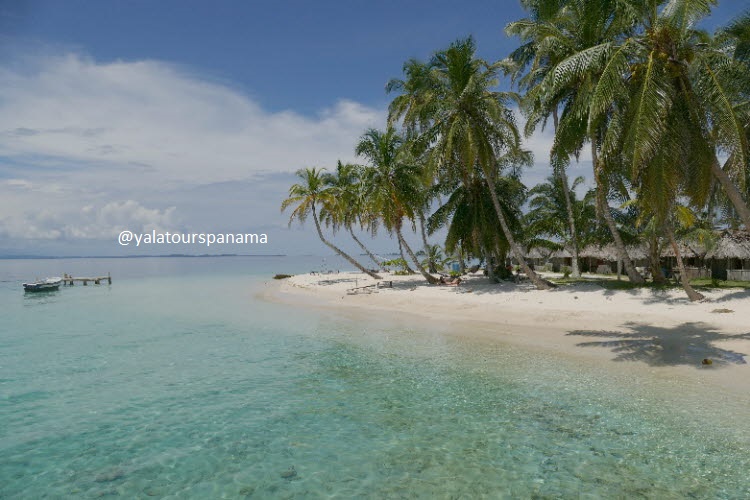
The unique world of the Gunas
A trip to the tiny Caribbean coral islands in the indigenous Guna Yala territory (San Blas) is a total contrast to urban life you should not miss. We recommend to stay ay least two nights and return on the third day, or just come for the day, if you are short on time.
The San Blas Archipelago of Guna Yala consists of 360 coral islands spread along 230 km Caribbean rainforest coast of the indigenous Guna (formerly written Kuna) people. You stay on a small island with traditional built cabins, palm trees and surrounded by a reef. Tours to other small islands give you plenty opportunities for snorkeling, relaxing, enjoying the view to the horizon, the white sand and the turquoise waters. You can visit a traditional village on a small island to learn about the unique culture of the Guna people. Excursions to the rainforest can be organized.
(The Gunas are making efforts to keep their coral reefs as one of the healthiest in the Caribbean. Reserves are being set up and awareness programs of sustainable use for locals and visitors are on their way. To prevent over exploitation of marine resources only free diving is permitted, it is a non-SCUBA area.)
Please don’t leave your garbage on the islands, take it back to the city.
Options:
- Transport by road (3 h)
- Stop on the way to visit the rainforest
- Flight (45 min.)
- Trekking adventure through the rainforest over the continental divide to the coast (2-3 days), cross streams and rivers, camp in tents, visit a Guna village and stay on a coral reef island, return by car (total 4-5 days)
- Small lodge (access only by air) or simple cabins
- Day trip (13 hours)
Since Guna Yala is a remote area, we recommend coming back one day before your international flight.
Simple Cabin
Travel early in the morning by vehicle over continental divide through the rainforest to the coast (3h), transfer to on one of the most beautiful islands, simple traditional cabins (sand floor, shared bathrooms). Transport from the coast to the island, all meals, and daily tours included. Travel back during morning or in the afternoon. If wished, arrangements can be done to make an excursion into the rainforest on the way over the continental divide.(optional private bahtrooms)
Lodge with private bathroom
Travel by plane only (6:00 am, and flying back at about 7:00 am)
Beautiful cabins with private bath. Transport from the coast to the island, local taxes, all meals and daily tours included. Optional: Visit the mainland (mangroves, river, cemetery, rainforest, waterfall).
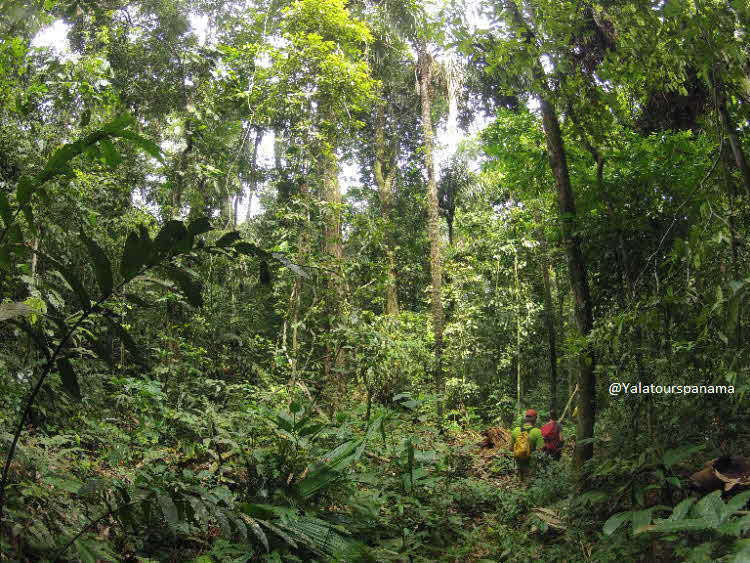
Darien Expedition
Darien, the province where the Panamarican Highway ends in the rainforest and home of the indigenous Embera people, is one of those mystic places on earth. In the Embera territory and rainforests you will still find the authentic spirit of humans living with and from nature. We will travel either by car and dugout canoe or by plane to remote places where settlers and cattle ranchers haven’t reached yet. Here you will witness the genuine way of life of the friendly Embera people. Short or longer hikes take us to the rainforest or to different villages. We will overnight in tents in a village or in the rainforest. In some places we offer accommodation in simple cabins.
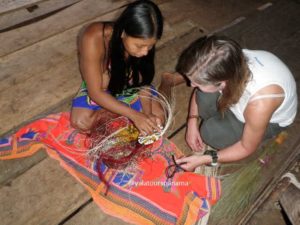
Embera in Darien Rainforest
Options:
- This expedition can be done in 2-7 days; we recommend staying at least 3 nights in the Darien
- Trekking through the rainforest
- Bird watching: Darien-specialties and forest birds such as the Harpy Eagle make this a great opportunity to observe many bird species not to be found in the rest of Panama or Central America.
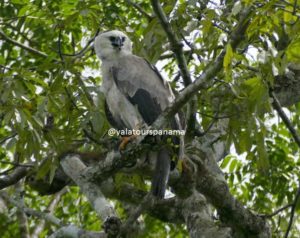
Harpy Eagle in Darien National Park
We recommend our combination to visit Guna Yala after the Darien expedition on the way back.
Mountains: hiking, rafting, canopy zipline
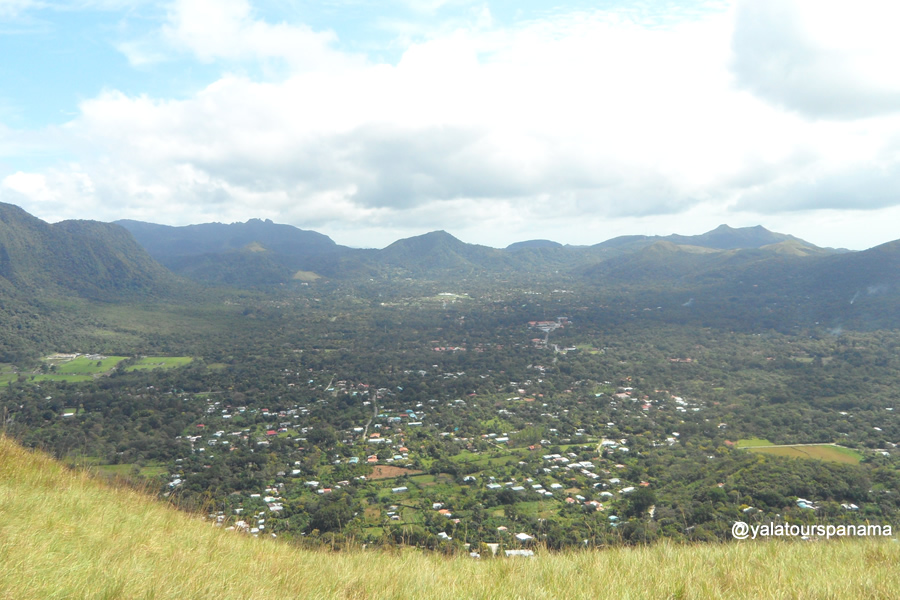
About a million years ago a huge volcano collapsed and formed one of the biggest craters of the Americas. The charming town El Valle is situated at about 600 m above sea level right in the former crater. Here you can visit the market, hot springs, a small town museum, a zoo, pre-Columbian petroglyphs, trail to waterfalls, do a canopy zipline tour, or go for a walk on a trail in the mountain forest at the crater rim right on the continental divide.
On our day trip we adapt the activities and places to visit to your interests (2 hours driving distance from Panama City).
Options:
- Stay overnigth in El Valle
- Besides hiking tours, we offer a trekking package of 2-3 days
- Birding tours (foothill species)
- El Valle is close to beach resorts at the Pacific. We can include a stay at a resort or a visit to a beach.
- Rafting (best in rainy season)
- Visit to El Cope National Park
- Rental car program: discover El Valle and other places
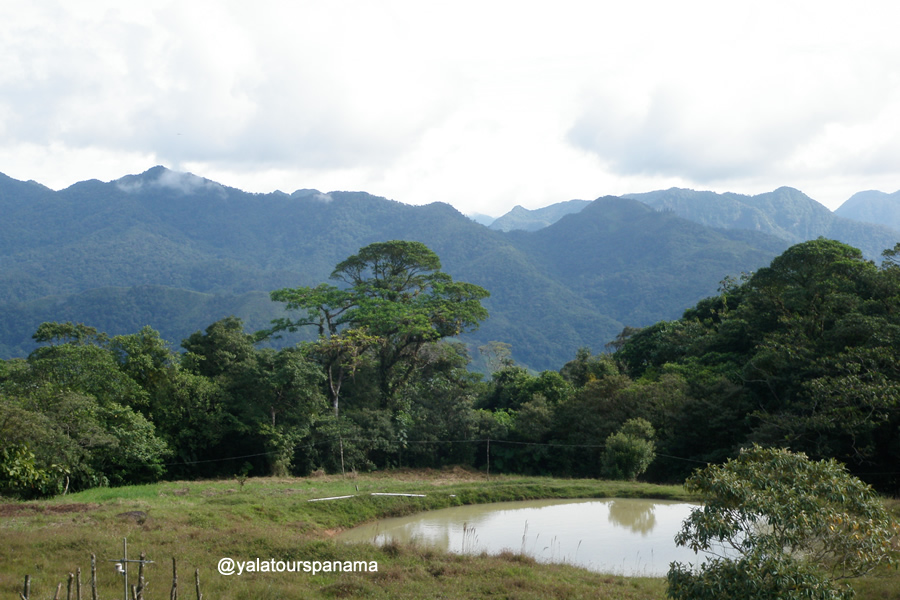
Santa Fe in the province of Veraguas is a small country side town with a pleasant temperature (400 m above sea level) at the feet of the Central Cordillera rising up to 1500 m. It is a great place to relax and visit several rivers with its pools in the rocks and waterfalls. For the more adventurous, excursion in the rainforest or to some mountains are rewarding the effort to get there. We offer also trekking tours of 2-5 days. Bird watchers can find here many foothill species. Santa Fe is about a 2 hour drive north of Santiago at the Pan-American Highway. On its way you can visit the beautiful wood carvings in the baroque church of San Francisco. South of Santiago is the Coiba National Park in the Pacific.
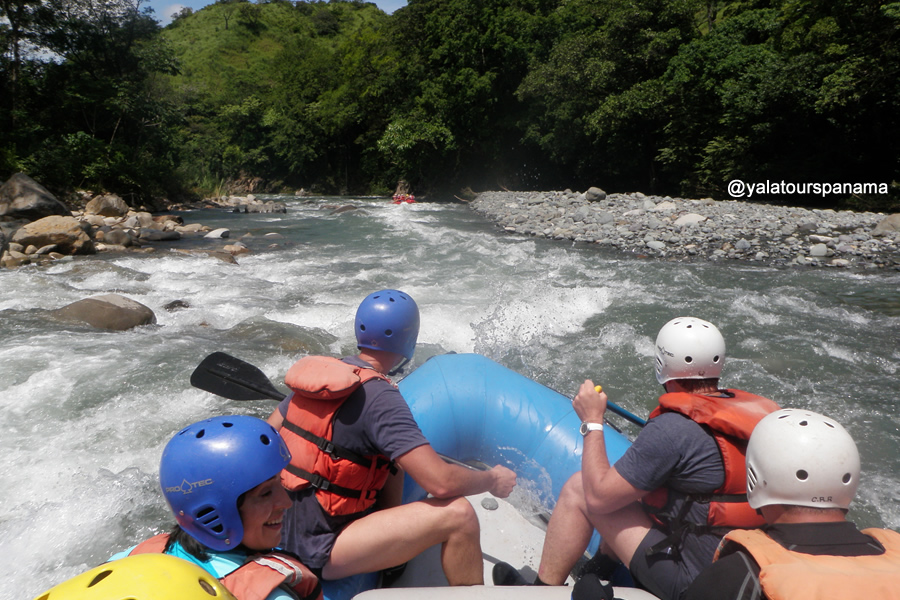
The highlands of western Panamas province Chiriqui offer a pleasant climate and a beautiful panorama. You stay in mountain villages at a height of 1000-2000 m. The mountain and cloud forests fascinate with their exuberant flora and the highland bird species. The archaeological site of the pre-Columbian Barriles culture, an orchid garden with about 2600 species and hot springs are some additional highlights of the region. Easily you spend three or more days in the mountain region where we offer many activities.
We offer tours and packages on the East side of Volcan Baru (region of the town Boquete) and on the West side (region of the town Volcan).
Hiking
The mountain climate is perfect for hiking and walking. In the International Park La Amistad (world heritage site) you will be amazed by the cloud forest. In the National Park Volcan Baru we have many hiking options such as the Los Quetzales Trail that connects over a mountain range the two main valleys of the region. You can also hike partially or all the way up to the top of Panama’s highest mountain Volcan Baru with 3475 m above sea level. Sometimes you can even see the two oceans from the top.
Coffee Tour
Learn how and why Panama produces some of the world’s finest and most expensive coffee. Depending on the month you will see in the plantation different stages of the coffee cherries and see how it is being cultivated and harvested. The next steps are the processing to get the dry beans and the roasting. Finally you will participate in the tasting to become an expert in coffee flavors.
River Rafting
A 2 hour drive takes you to the beautiful scenery of the Fonseca River in the indigenous Comarca Ngäbe-Buglé where you see Ngäbe ladies in their long colorful dresses. After the instructions you practice the team paddling and soon you get to the first rapids of class II-III. Depending on your experience the rafts will be guided to the more difficult side of the river or the less agitated parts. On the way is a lunch stop where you can have a swim.
Another good option is Chiriqui Viejo River. Although rafting has been reduced to class II-III and in its navigable sections, since the construction of hydroelectric power plants. However this river gives best opportunities for the dry season.
Canopy Ziplines
A 45 min. drive takes you up through coffee cultivation area to a mountain forest with a beautiful view to Volcan Baru. After the instructions you walk to the first of 14 platforms. The total length is 3 km and the longest of the 12 lines from tree to tree is 300 m, with a height of maximum of 116 m above the ground. You descend from 1800 to 1600 m above sea level.
Bird Watching
The mountains of Chiriqui offer you a high variety of of bird species (over 430) from the foothills to high elevations. Here you can find many endemic species and specialties of Western Panama. A great reward is a sighting of the Resplendent Quetzal, one of the most beautiful birds in the world.
A specialized birding guide will take you to the best birding spots for 1-4 days.
Island archipelagos
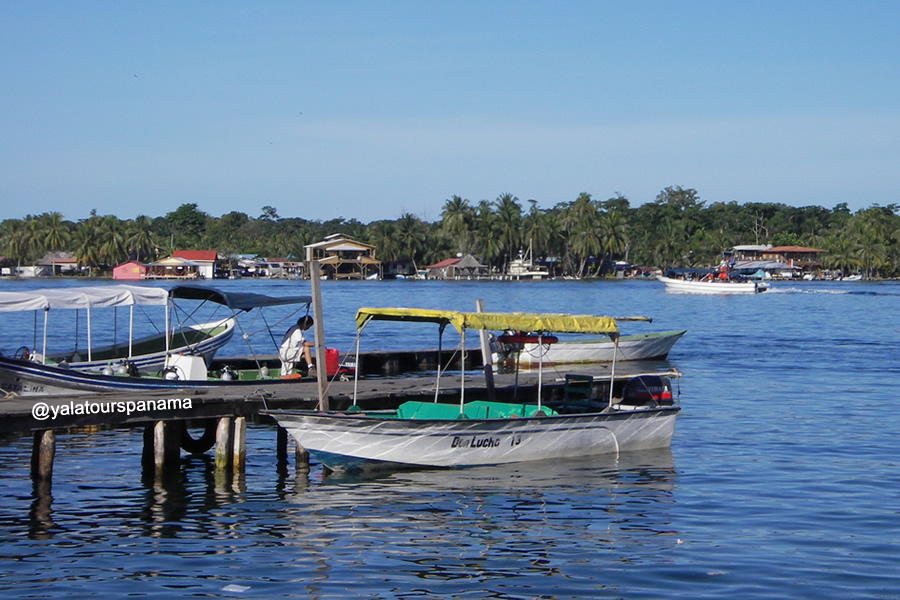
Take an hour flight from Panama City to Bocas del Toro archipelago in the Western part of Panama or combine Bocas Del Toro with some days in Chiriqui on the Pacific side, driving through the mountain rainforest of the continental divide.
At the small town of Bocas del Toro you find Caribbean flair with its typical architecture, its people, waterfront restaurants and many small hotels. Six big islands of the archipelago protect the bay from waves and make boat excursions in calm waters through mangrove islands and to beaches a main attraction. The Bastimentos National Park includes rainforest, mangroves, reefs and the coral islands Cayos Zapatillos. Look out for dolphins, sloths, tiny red frogs, visit a beach, an indigenous community, a cave, other islands, go snorkeling or diving.
We offer packages with:
– Flight from Panama City or transport by car from Chiriqui or the Costa Rican border
– Accommodation in the town of Bocas Del Toro or in more secluded places of the islands
– Tour program in the archipelago according to your interests
– Tours on the mainland of the province Bocas del Toro visiting mountain valleys, waterfalls, San San Pond Sak Reserve where the elusive Manati is still being found, indigenous communities and their cacao and banana plantations for export and the local market. Learn how cacao beans are processed to chocolate. Get to know the culture and daily life of the Ngobe and Naso.
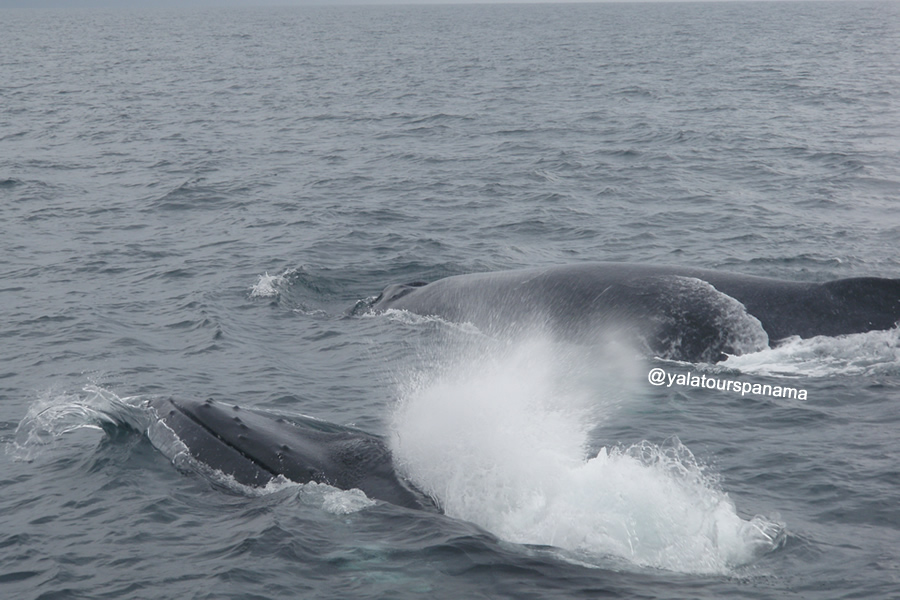
The Pearl Island Archipelago in the Pacific offers beautiful deserted beaches, developed islands such as Contadora, on some islands impacting new tourist developments on its way and many beautiful nature islands.
Spectacular is the observation of Humpback whales. They can be seen here from July to October making Panama a top spot for whale watching. Humpbacks migrate from the Antarctic all the way to the tropical warm waters of Panama to give birth and to raise the new born whales before they travel back, the longest migration route of a mammal. On daily tours around many beautiful islands you have the possibility to see whales breaching and training the whale babies to jump.
Our package includes transport to the islands by plane (15 min.) or ferry (3 hours), accommodation, boat excursions to other islands and whale watching tours.
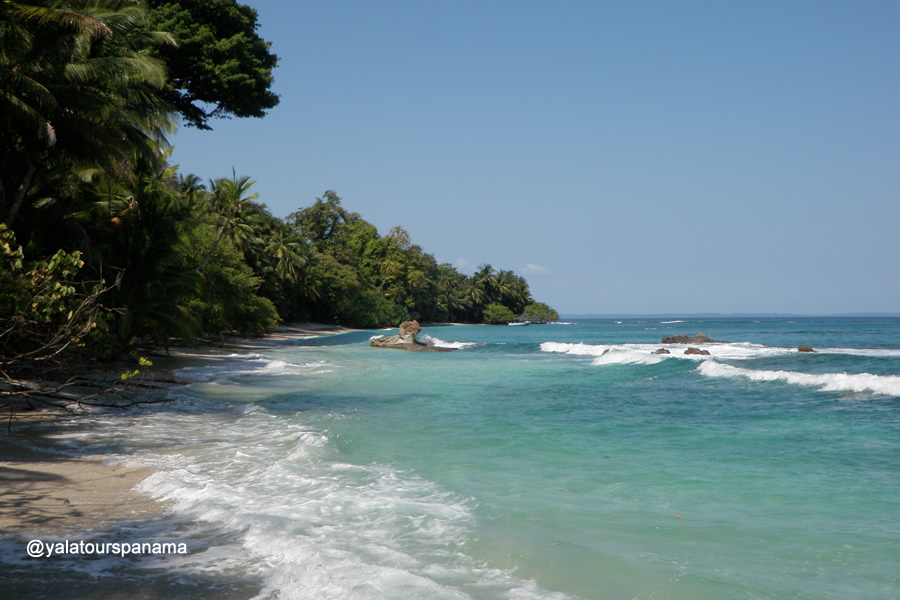
The 500 km2 mostly with rainforest covered Coiba Island is the world’s biggest uninhabited tropical island and the most important nature island of the Pacific coast of the Americas. The 2700 km2 marine park includes several nature islands in a rich marine ecosystem with mangroves, coral reefs and fish abundance next to the deep waters of the Pacific. The distance of 50 km from the mainland and the lately dissolved penal colony helped to conserve its rich nature.
Coiba offers good diving with lots of fish and encounters with big fish such as rays, mantas, white tipped reef shark ad other sharks. Frog fish are commonly seen and whale sharks can be seen mainly in the dry season. Non divers find great snorkeling around small islands and at the coral reefs where turtles can be seen fairly regurlarly.
From the boat dolphins and whales (July to October) are seen very regularly. From the beach scarlet macaws can be observed sometimes and near mangroves the American crocodile. In the rainforest can be seen the Coiba howler monkey, white faced capuchin monkey and the Coiba agouti. Boat rides take you to these nature excursions and the pristine beaches of the islands.
We offer:
– Day tour to the island of Coiba including snorkeling along some smaller islands
– 3 days 2 nights on the island of Coiba with rainforest walk, beach visit of other islands and snorkeling
– Diving day tour with 2 or 3 immersions
– Diving trip of 3 days 2 nights and 9 immersions
Accommodation is at the park ranger camp in dormitories or tents. We recommend at least 2 nights on the island.
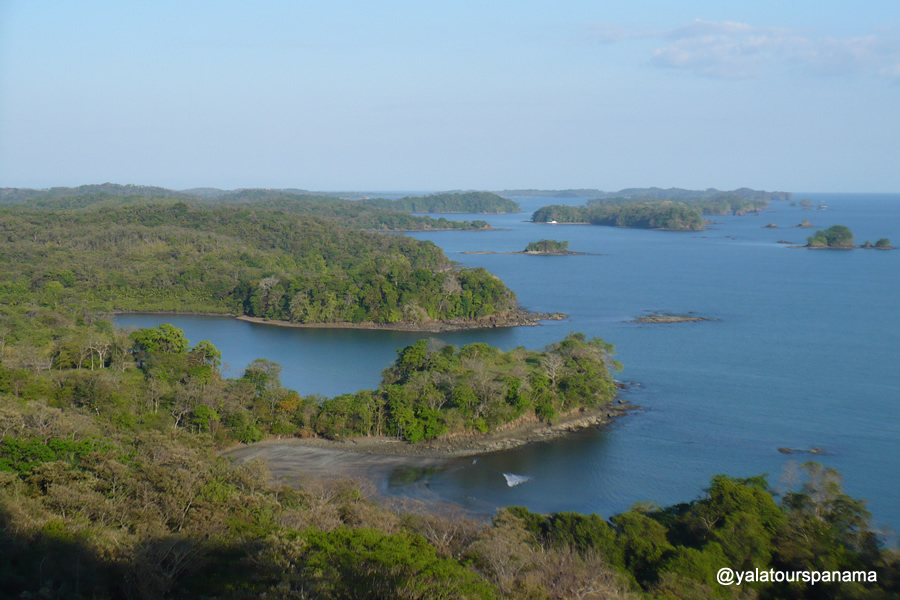
In a short distance to the highest mountains of Panama you can swim in the Pacific and enjoy the beaches in the island archipelago of the Gulf of Chiriqui. Combine your visit to the mountains of Chiriqui with the islands of the Gulf.
We offer you mangrove and island boat tours with wildlife observation, beaches and some hiking. You might see Howler Monkeys, Iguanas, American Crocodile, Crab-eating raccoon, dolphins, sea birds like Blue-footed Booby, and and lowland rainforest birds like Lance-tailed Manikin. From July to mid October you have excellent opportunities to watch Humpback Whales. (2 days)
Beside these main tours, we offer many other tours in Panama.
Tell us your interests and time frame; we will organize great tours for you.
